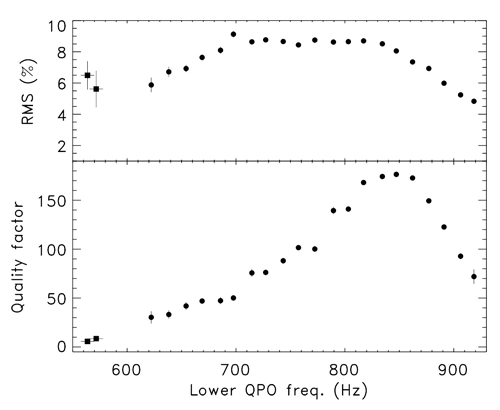 |
|
Figure 3: Evidence for the existence of the ISCO from data recorded by the Rossi X-ray Timing
Explorer satellite from neutron star binary source 4U 1636–536 [33]. The source shows quasi-periodic
oscillations (QPOs) with frequencies in the range
 . The sharp drop in the
quality factor (bottom panel) seen at . The sharp drop in the
quality factor (bottom panel) seen at  may be attributable to the ISCO [34]. may be attributable to the ISCO [34]. |
- Home
- Articles
sidebar
"Foundations of Black Hole Accretion Disk Theory"
Marek A. Abramowicz and P. Chris Fragile

